Pure Storage FlashBlade with Cohesity DataProtect Storage-Efficient Solution for Rapid Restore of VMs
Integration of Pure Storage FlashBlade with Cohesity DataProtect enables to focus on rapid restoration of applications and VMware environment.
This is a Press Release edited by StorageNewsletter.com on February 16, 2024 at 2:02 pm
By Mandeep Arora, Data Protection Solutions Architect, Pure Storage, Inc.
The integration of Pure Storage FlashBlade with Cohesity DataProtect enables you to focus on the rapid restoration of your applications and VMware environment.
With the tremendous growth of data, companies are looking for the best approach to back it up. Ensuring the fast recovery of data when a disaster occurs has become more difficult. Businesses face even more significant challenges if they don’t modernize their rapid restore strategy as well. Most disk-based backup solutions can’t keep up with the demands of rapid recovery or rapid restore of VMs.
Pure Storage and Cohesity DataProtect together solve data restore challenges while keeping downtime to a minimum. This post will demonstrate the performance characteristics of Pure Storage and Cohesity’s DataProtect capabilities for VMware recovery and how to use the solution to solve the 2 biggest challenges of data protection: slow recovery and DR.
This integration brings together FlashBlade with Cohesity diskless hardware and intelligent, extensible software. This solution enables you to spend less time worrying about retrofitting legacy solutions for future needs so you can focus on the rapid restoration of your applications and VMware environment.
This integrated solution combines infinite scalability with open architecture flexibility so you can consolidate multiple business workloads on a single platform. FlashBlade provides a robust and fully distributed unified fast file and object (UFFO) storage. Together, FlashBlade and Cohesity software deliver 1 of the fastest backup and restore solutions on the market today.
Full recovery vs. instant recovery: Why full recovery is important
Instant recovery provides instant access to backup data but doesn’t provide full recovery of data rapidly. It may take many hours to complete a full migration/recovery of data to the primary source. While it does solve some challenges, performing instant recovery can be cumbersome when a disaster recovery situation arises. While you can instantly access backup data, you may experience performance issues and impact other running backup policies. Instant recovery can also overload the VMware infrastructure when 1,000s of VMs are involved in the process. In short: Instant access may not be the most optimal solution for full copy recovery.
On the other hand, Pure Storage with Cohesity DataProtect offers full rapid recovery. It guarantees the recovery of VMs with high performance while maintaining the defined SLAs for restore without overwhelming the backup infrastructure. It also keeps existing backup SLAs intact when restoring hundreds of VMs.
Performance test bed and configuration
Cohesity’s DataProtect software powered by Cohesity nodes (PXG1 and PXG2 Nodes) can’t deploy as a standalone cluster. You’ll need to configure them with FlashBlade. Cohesity complements FlashBlade storage with a distributed file-system software architecture designed for high availability. The nodes have a share-nothing topology without a single point of failure or inherent bottlenecks. This disaggregation of compute and storage provides the ability to scale independently and linearly on compute and capacity. The distributed file system spans across all nodes in the cluster and natively provides global deduplication and compression, with encryption powered by FlashBlade.
Cohesity is integrated with FlashBlade and will perform the necessary configuration via API integration. Cohesity auto-deployment software will auto-detect the FlashBlade system and validate whether there are existing data VIPs (8) configured to perform the deployment. The deployment will create:
- 9 NFS 3.0 file systems per node
- 6 NFS file systems for data per node
- 1 NFS file system for indexing, metadata, and local node file system on the FlashBlade system
The software will create 36 file systems for clusters with 4 nodes, mount the NFS file system on each node of the cluster, and load balance across data VIPs.
It will mount the NFS file system over data VIPs and balance across all Cohesity cluster nodes. If any nodes fail, it will redistribute the NFS mount point on the remaining nodes, then later rebalance across the cluster once the failed node is back online. If you add new nodes to the configuration, the software will create a new set of NFS file systems for data storage.
Test configuration
Figure 1 below illustrates Pure Storage and Cohesity DataProtect software with cluster nodes test environment used to evaluate the performance on a 4-node-cluster configuration. We designed the testbed to validate the performance and scalability of the backup and restore of the VMs with Pure Storage FlashRecover and FlashBlade:
-
ESX servers have VMware ESXi 6.7 installed.
-
Servers are clustered in groups of 4 within vCenter, which is set up for ingestion VMs.
-
The VMs are spread across 3 Pure Storage FlashArray devices connected to the ESX hosts over iSCSI.
-
Datastores are created from the 3 FlashArray devices on which the VMDKs are created for every VM.
-
To avoid the read throughput, the testbed VMs are selected equally from multiple ESX servers and 3 datastores, 1 per FlashArray device.
Figure 1: Solutions architecture overview for rapid restore at up to 1PB/day
Click to enlarge
Objectives
This test case measured the overall backup throughput achieved on 8, 16, 32, and 64 VM full backups with the defined solution architecture. We selected not more than 8 VMs from 1 ESX server.
VM backup performance results
We performed full backups of VM backup policies with 8, 16, 32, and 64 VMs through the Cohesity interface. The Cohesity interface status log captures the backup speed. The throughput measured on a VM is based on end-to-end performance, including pre- and post-operation on the VMware level (i.e., taking a snapshot, performing the actual data backup, and conducting re-consolidation on the snapshot). To avoid overhead on the VMware snapshot consolidation, we restricted I/O operations on the VM(s) during backups.
Full backup
With this solution, the initial full backup in our test achieved 3 times the data reduction rates overall from inline deduplication. On initial full backup, the solution achieved a maximum average throughput of 3.2GB/s on tests of 64 VMs. That’s almost equivalent to 12.24TB/hour of ingestion rates on a full backup. The backup rates were linear with 8, 16, 32, and 64 VMs (Figure 2 below). You can increase the number of VMs in a policy and add more Cohesity C400 nodes to get higher throughput. But, we limited our environment to 4-node clusters.
Figure 2: Backup performance of Pure Storage and Cohesity DataProtect on 4-node cluster.
Rapid restore on full copy recover
Full copy recovery of VMs for policies with 8, 16, 32, and 64 VMs is performed through the Cohesity interface. The restore performance is captured from the Cohesity interface status log. The throughput measured on a VM is based on end-to-end performance, which includes pre- and post-operation on the VMware level such as creating an object for restore, performing the actual copy of the VMs, and post-processing on VMware.
The restore tests showcased 1 of the biggest advantages of Pure Storage FlashRecover: rapid data restore. The restore rates were linear with 8, 16, 32, and 64 VMs (Figure 3 below). And with a 4-node Cohesity cluster configuration, the restore rates were as high as 4.3GB/s, which is almost equivalent to 15.5TB/Hr of restore rates on Vmware.
Figure 3: Restore performance of Pure Storage and Cohesity DataProtect on 4-node cluster.
Advantages of implementing Pure Storage FlashRecover
Using FlashBlade as an NFS storage target for the Cohesity data protection solution offers deduplicated data a storage-efficient solution for rapid recovery of full VMs back to the primary target. The exclusive integration between Cohesity and FlashBlade also enables you to consolidate secondary storage workflows. This architecture provides the industry’s top compute platform and disaggregated unified flash storage with integrated backup and recovery software. The integrated solution delivers:
- Up to 3 times faster backup and restore throughput than disk-based alternatives
- Recovery of 1,000s of virtual machines a day
- Disaggregated compute and storage for independent scaling of backup and recovery processes
- Reuse of backup data on FlashBlade for modern apps
Resources :
Pure Storage FlashBlade//S with Cohesity DataProtect Software: Secret Weapon Vs. Ransomware
VMworld 2020 Wrap-up: Content and Value Galore
Ready for VMworld 2020? See What Pure Storage Has in Store
Pure Service Orchestrator and VMware Velero Sneak Peek
Build a Simple, Optimized Hybrid Cloud with VMware Cloud Foundation
Pure Storage at VMworld 2019 Europe
Pure Storage at VMworld 2019: Show Recap









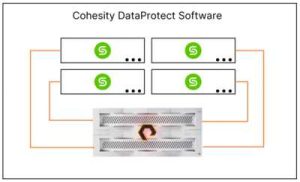
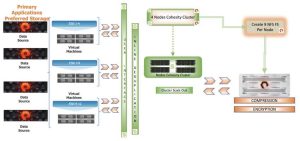
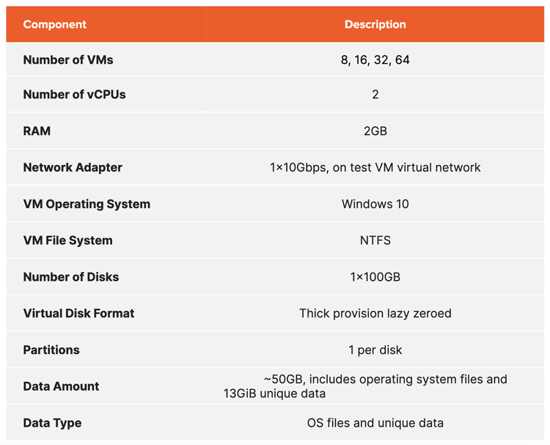
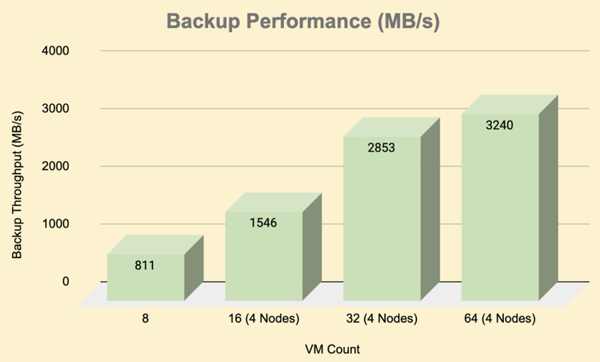
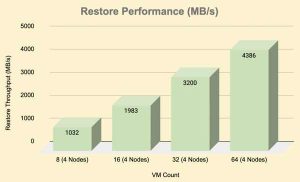






 Subscribe to our free daily newsletter
Subscribe to our free daily newsletter

